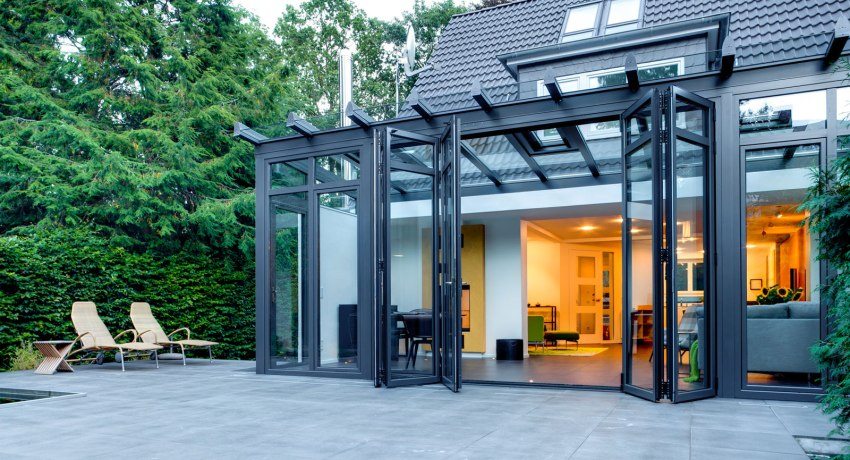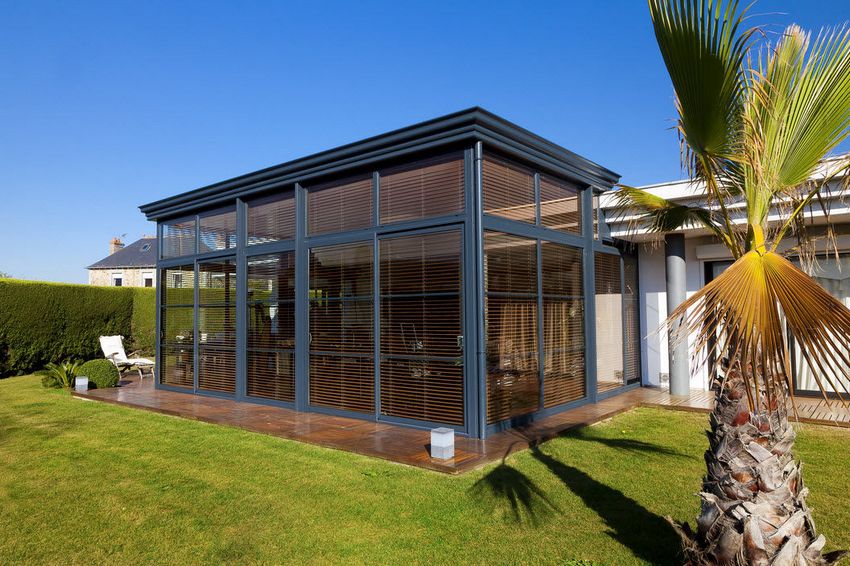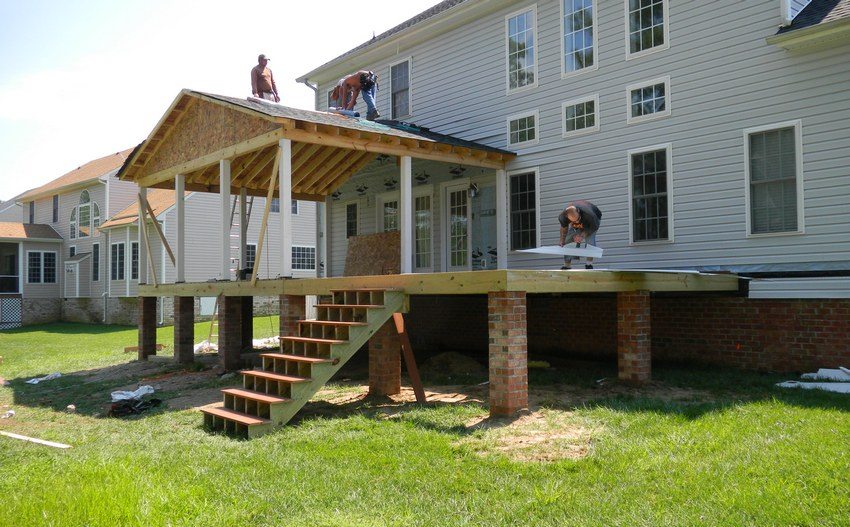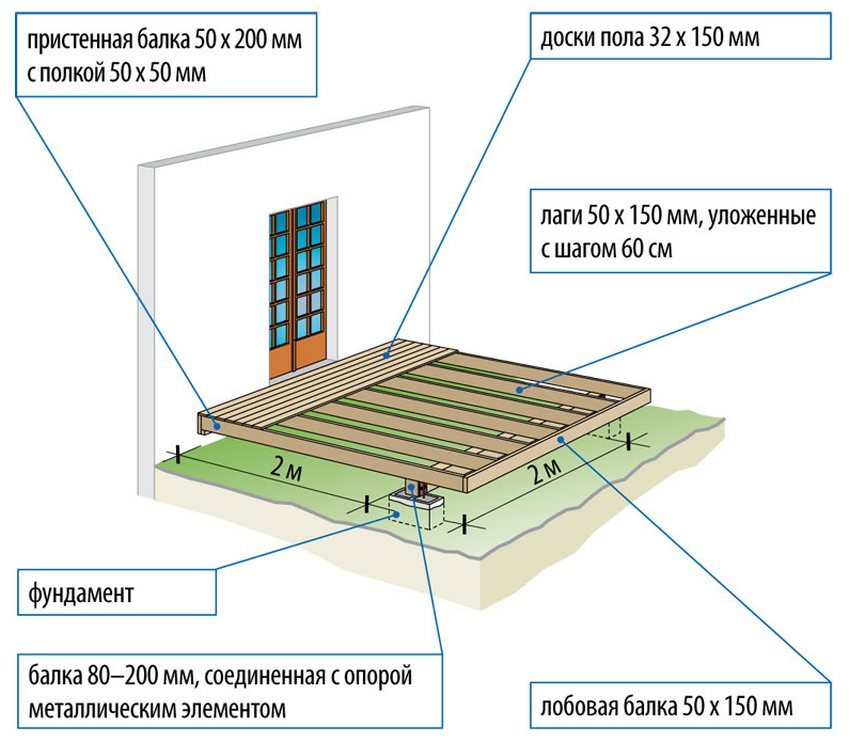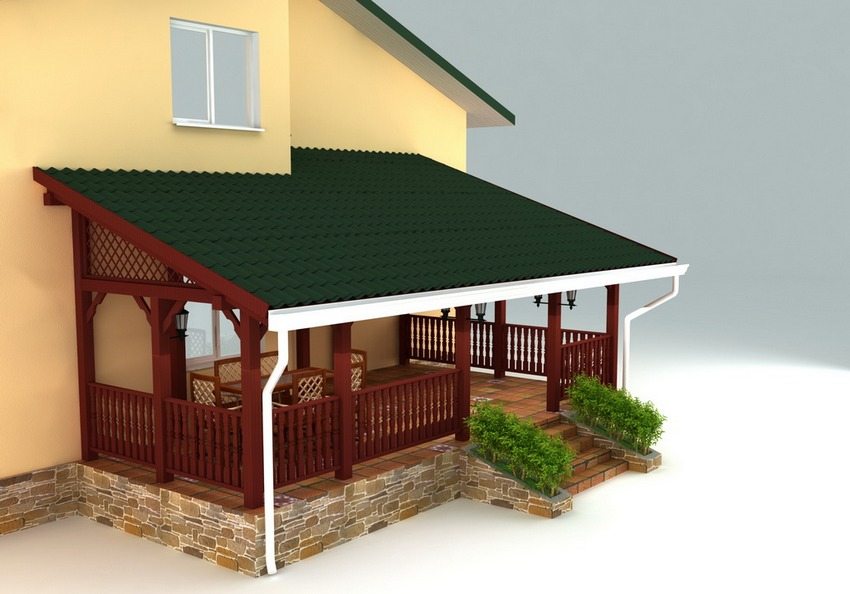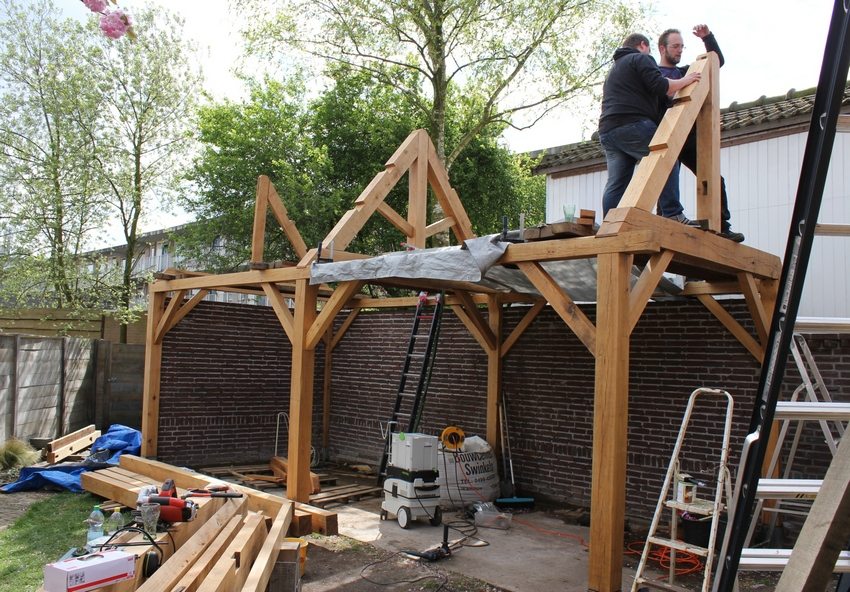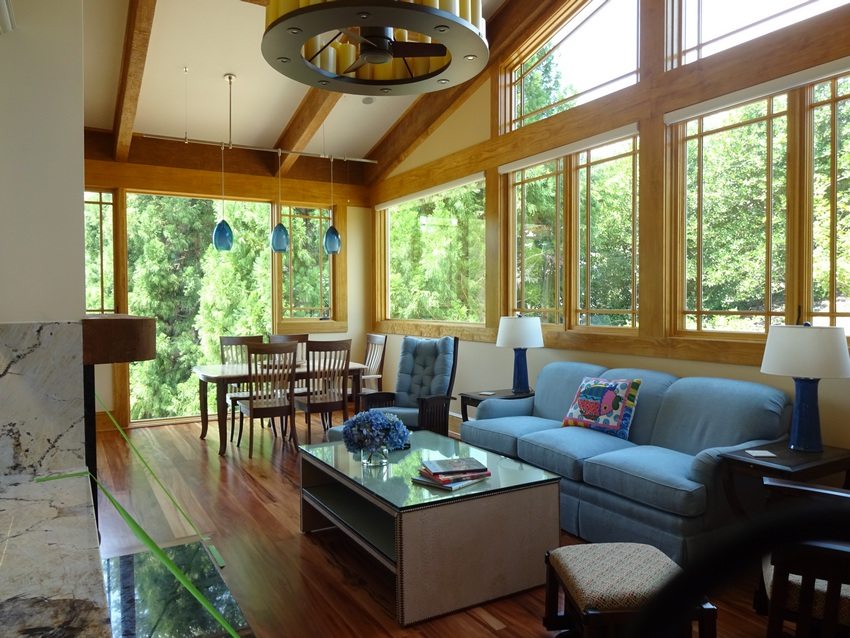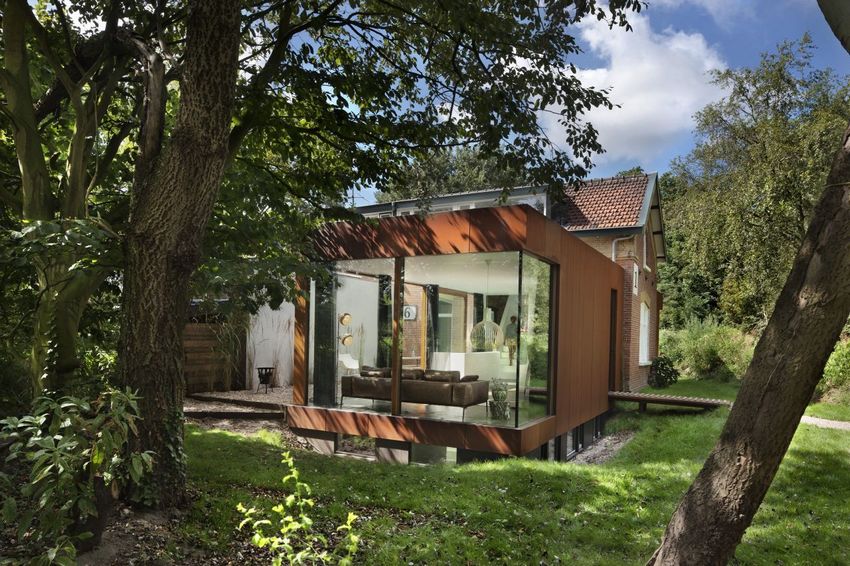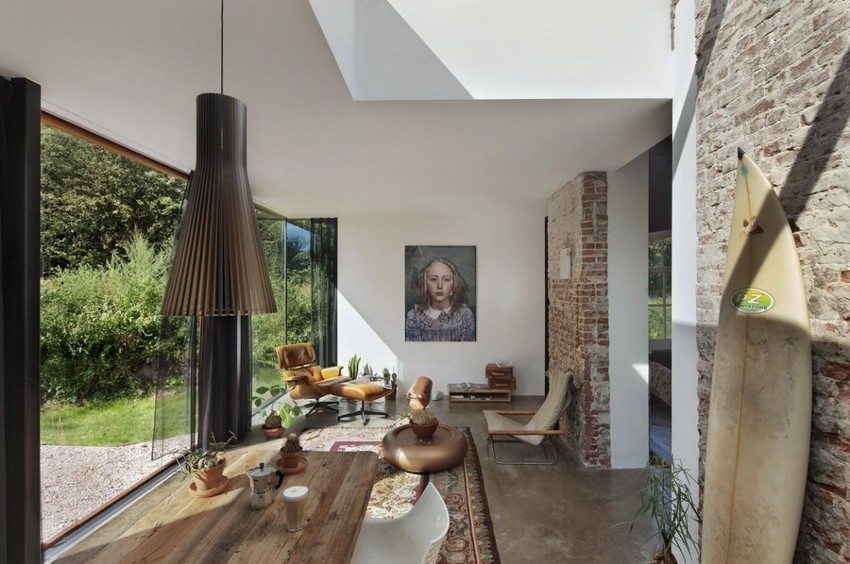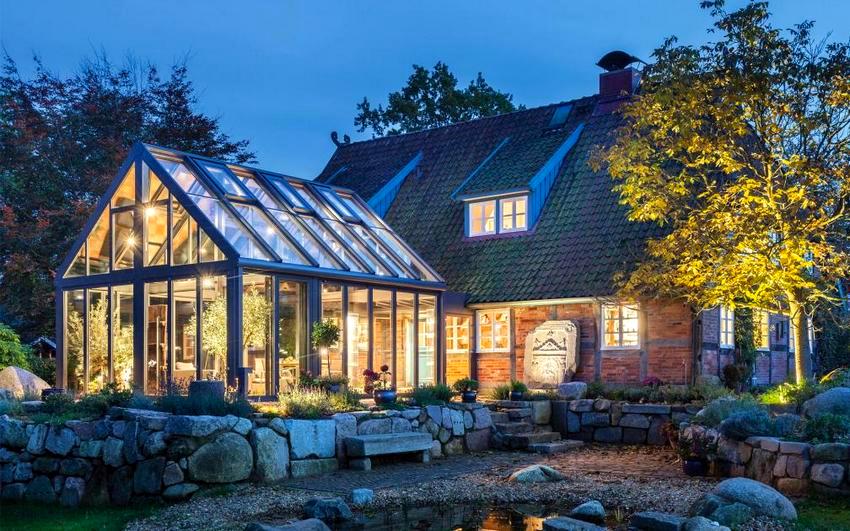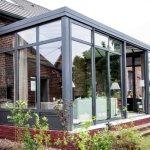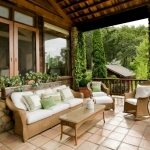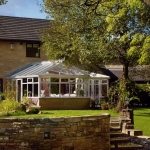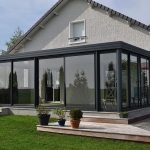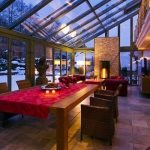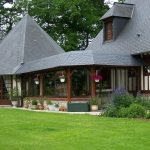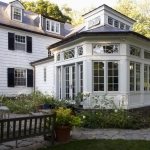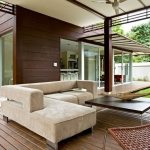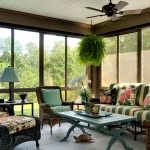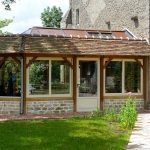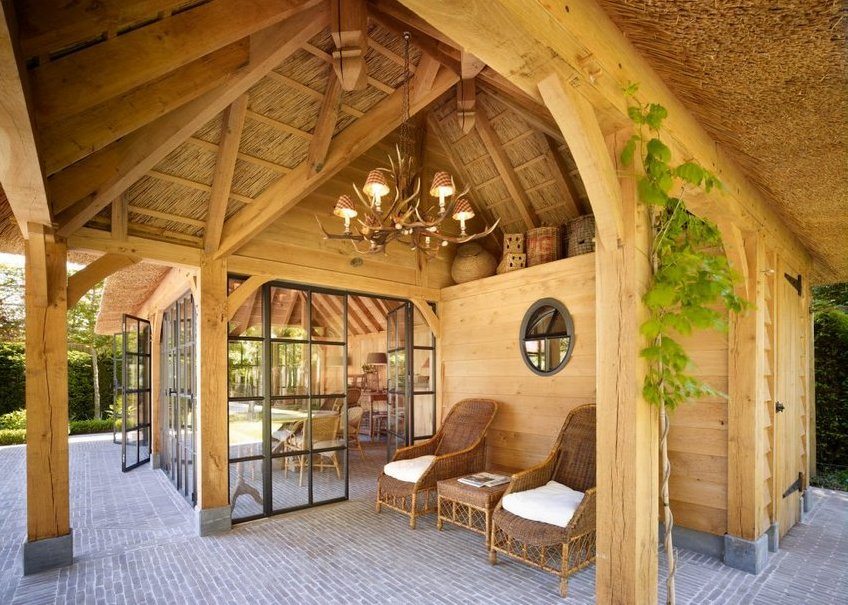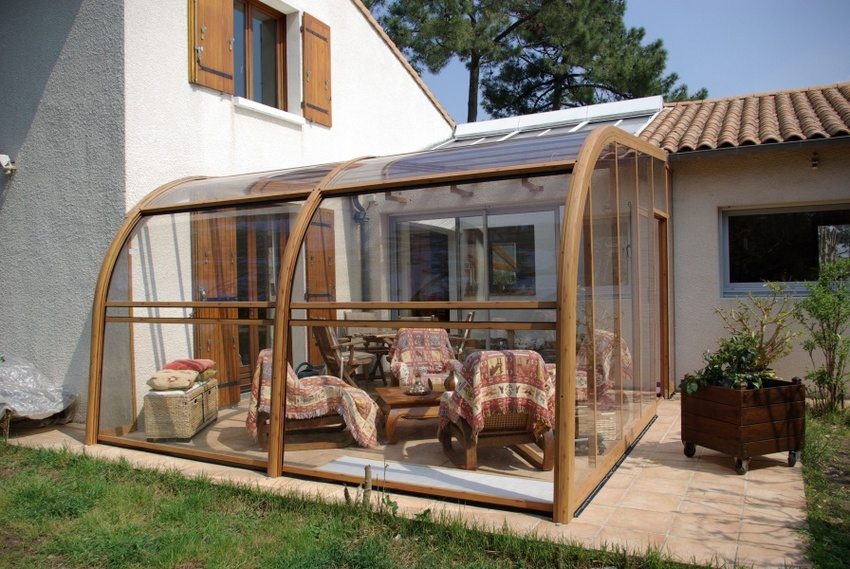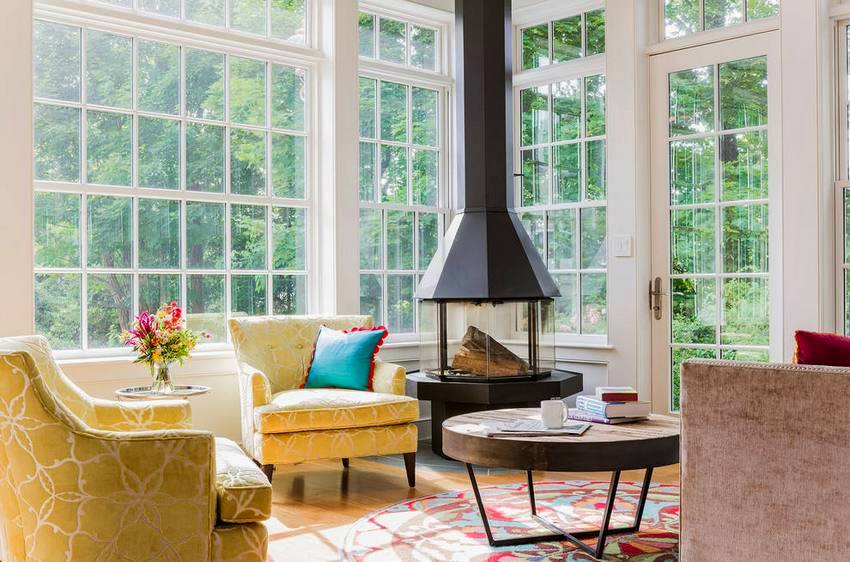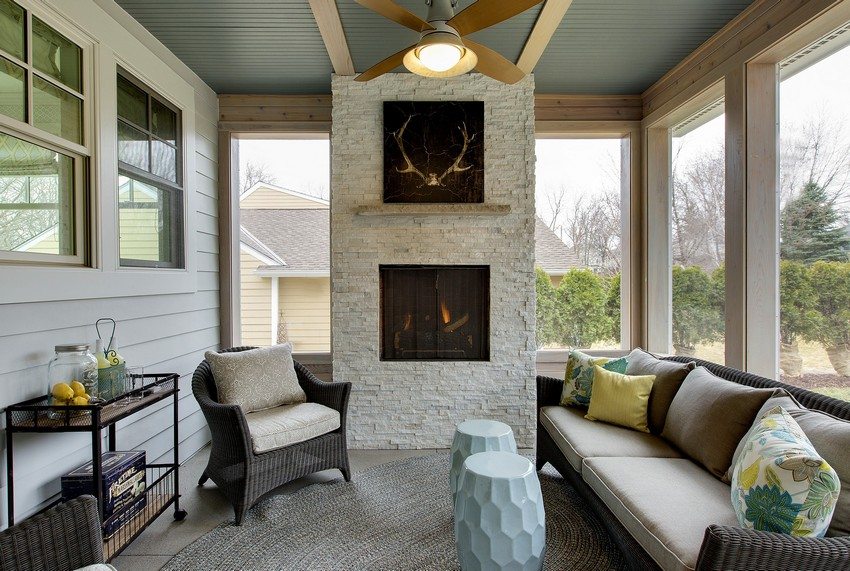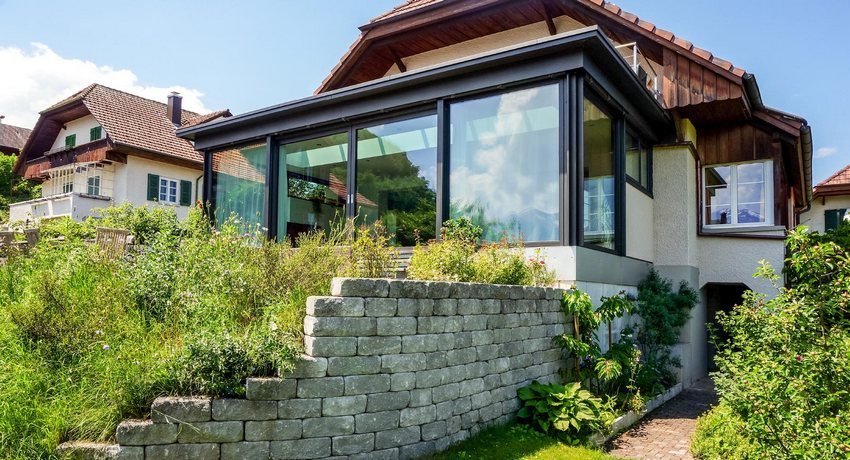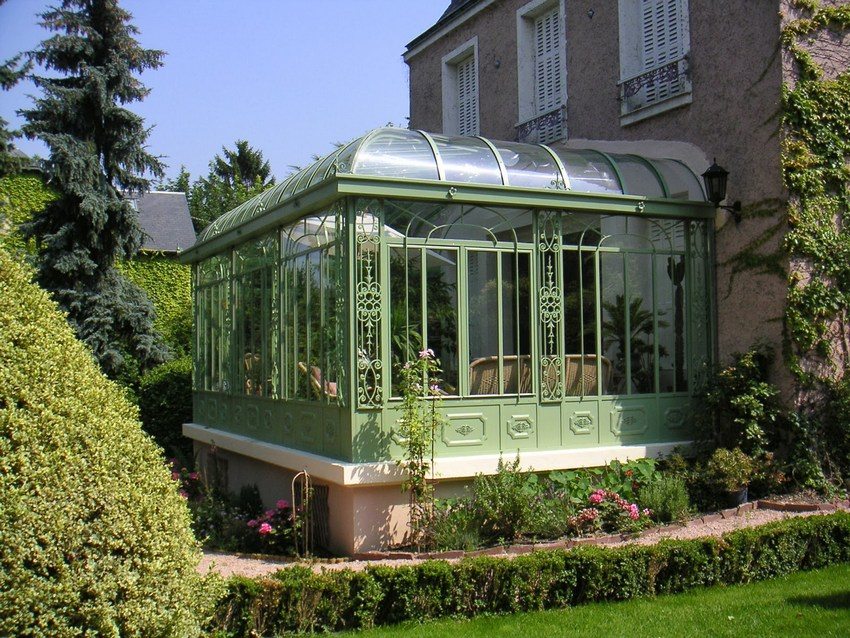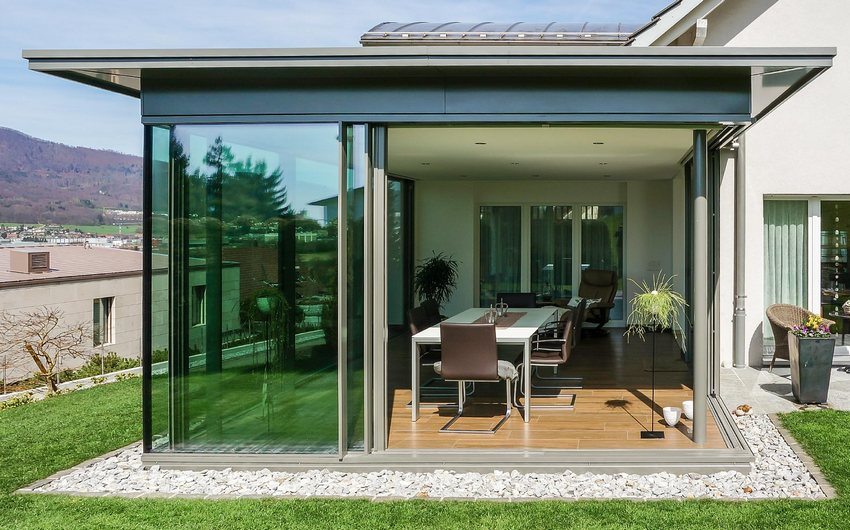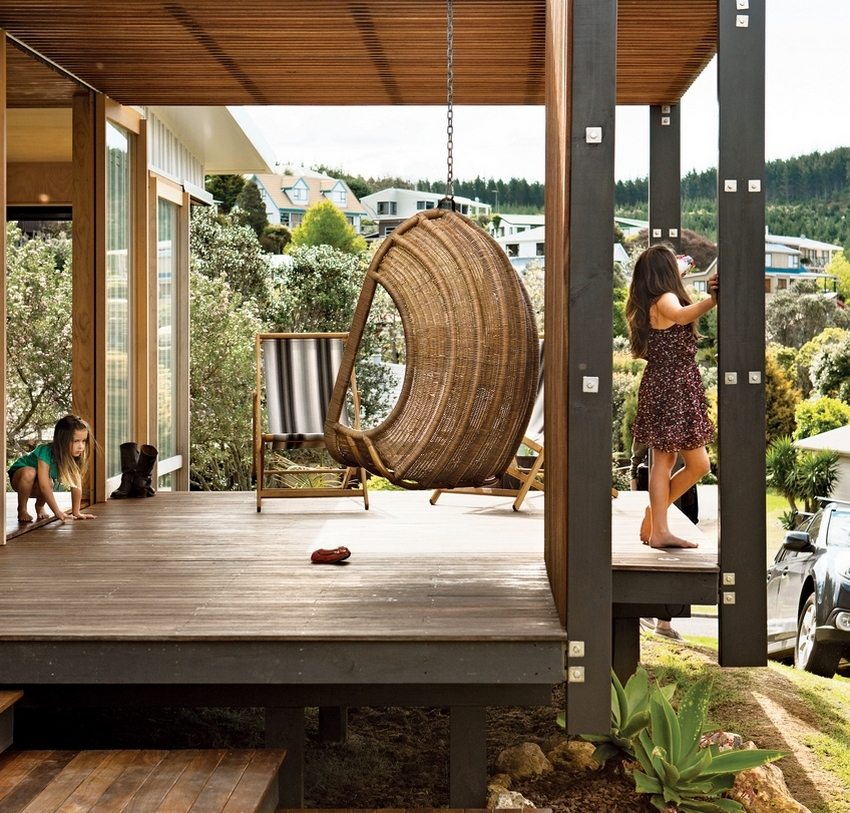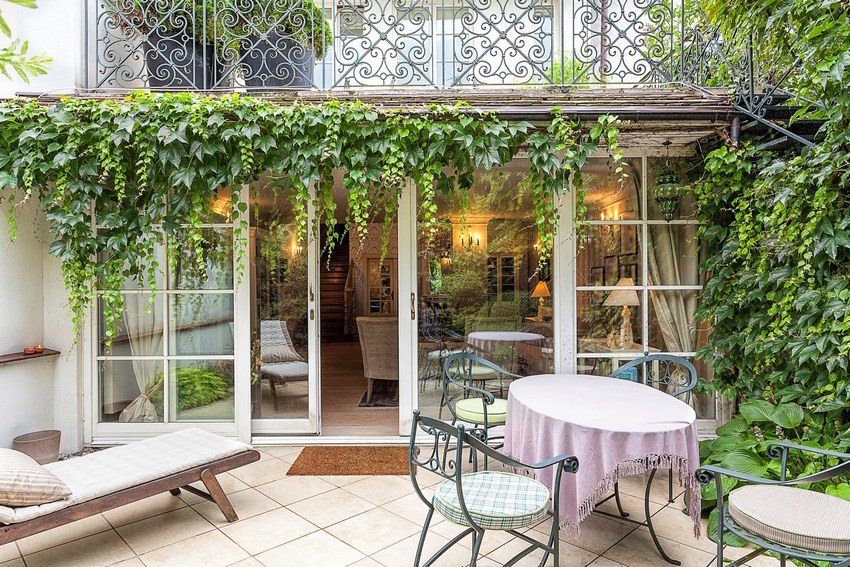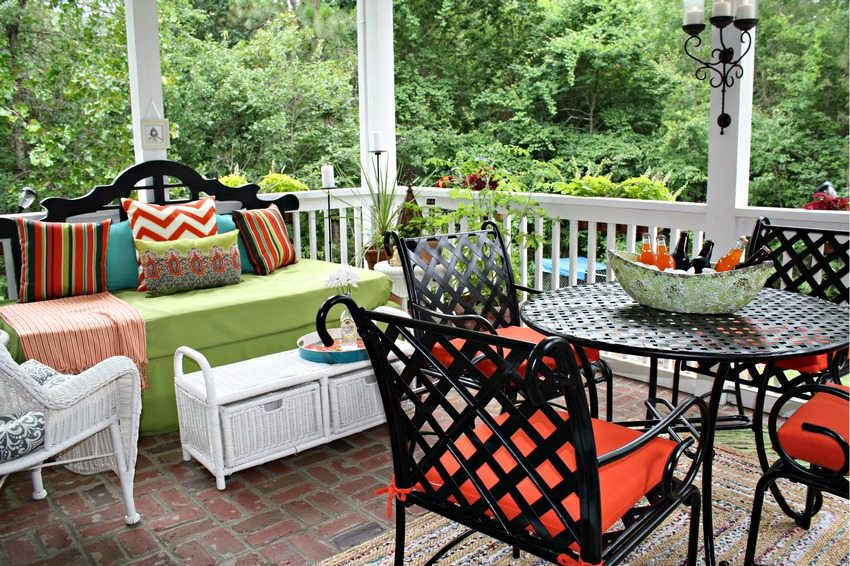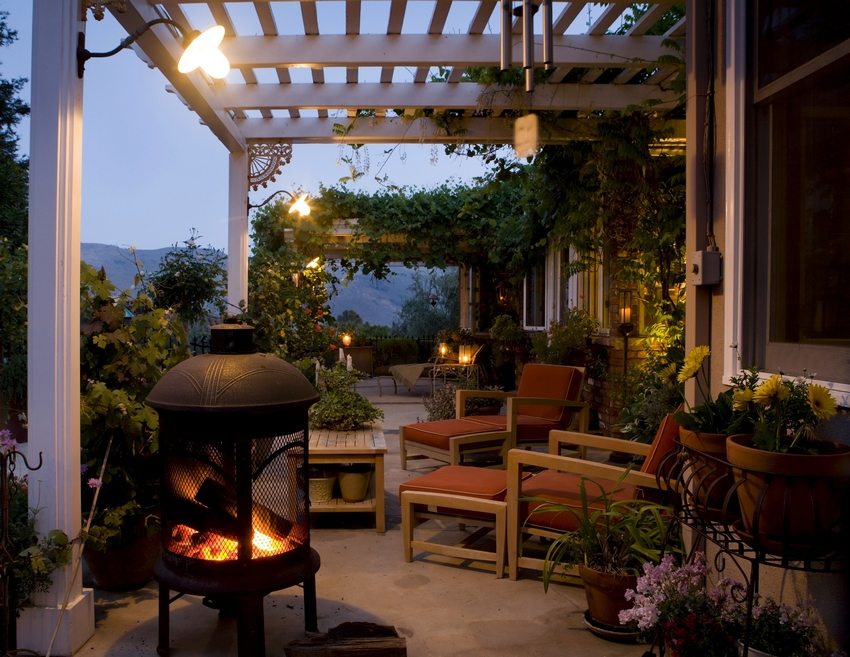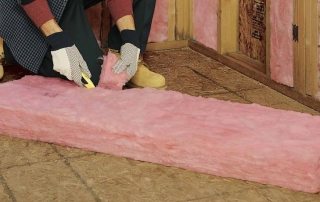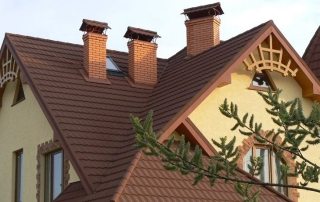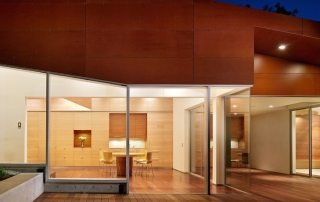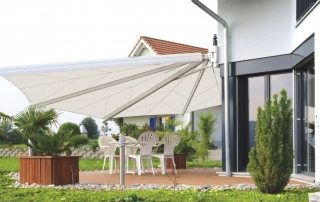If you hesitated for a long time to add a veranda to the house, check out the article "Veranda to the house with your own hands: projects, photos of the best premises" Unique solutions for open and closed options will convince you of the need to add a veranda, which will later become a favorite place in the house for you and your guests. It will serve as the very link connecting the comfort of the house with open nature. In summer, the veranda will protect you from the heat, and in autumn it is so pleasant to warm up with hot tea accompanied by a noisy rain band.
Content [Hide]
Do-it-yourself veranda to the house: projects, photos of the best works
If you are just planning to build a house, it is better to immediately give preference to the project of a house with a veranda. Then its structure will have a single foundation with the house, identical walls and a common roof - such a unity will undoubtedly become the pride and decoration of any building. If initially the house did not have verandas (terraces) or it was very small, it is always possible to add or expand the premises - without damaging the existing structure of the house.
How to attach a veranda to the house
As in any construction, the first step will be to draw up a project of a veranda to the house with your own hands. A photo of the options available on the Internet is a clear confirmation that the project should take into account the peculiarities of the architecture of the building and the layout of the site. Since the veranda will serve as insulation for the existing house, it is advisable to place it on the north side. At the same time, do not forget that if the veranda is used as a recreation room, summer cuisine or a sports room, it is recommended that its windows overlook your garden, and not the adjacent area.
If the veranda is attached from the side of the entrance to the house, then it will be inappropriate to use it as a rest room - such extension will serve as a spacious summer hall.
Starting to develop a project of a veranda to the house with your own hands, first of all, you need to highlight the following points:
- which wall of the house the extension will border on;
- whether the veranda will be open or closed;
- where the entrance will be located;
- what material will be used for the extension;
- the amount of materials required.
If the planned veranda will have a large glazing area, it is necessary to think over the ventilation system, which will help to avoid the greenhouse effect in the hot season. You can arrange window constructions with removable frames - then an open summer terrace will easily turn out from a closed veranda.
In order for the temperature of the veranda room to remain comfortable during the cold period, it is recommended to build its walls from a dense material, make sure that the enclosing structures are made without gaps and cracks. To retain heat, the glazing is double.
Useful advice! In order for the attached veranda to create a single architectural ensemble with the house, it is necessary to use the materials from which the walls of the house are made for its enclosing structures.
The walls of the veranda should remain independent of the main house. They are performed on a separate shallow strip or columnar foundation. The roof, as a rule, should have one not too steep slope, the floor is made with a slope of up to 2 cm per meter of width towards the site.
Numerous photos of the verandas attached to the house can serve as a model for your building option.
A veranda attached to a brick house. Photo gallery of excellent buildings
Despite the fact that experts recommend the use of identical materials for adding a veranda, it is not necessary to attach a veranda to a brick house (the photo confirms this) made of brick. Many make an extension from other materials. The main rule here is that stylistically the veranda should support the existing structure of the house. An important role is played by the compatibility of the materials used and their correct combination.
A brick veranda will be combined with the brick walls of the house, but natural wood will also look perfect. And if the walls of a brick house are sheathed with siding, you can create a veranda structure from plastic and glass, using sliding glazed door systems to enter.
The most common are still verandas made of brick, natural stone, beams and boards or extensions made with a metal frame. Red brick is a reliable material and is suitable for the device of a closed veranda. Do-it-yourself brick veranda to the house (projects, photos are available on the Internet) involves the device of a strip foundation. The extension is carried out to the front wall with a size of at least 3 m, and a width, depending on the size of the site, up to 5-6 m.
Useful advice! Any building made additionally on the territory of your site is subject to mandatory registration with the architecture department and the bureau of technical inventory, otherwise the building will be listed as a squatter.
When performing a summer extension of a brick veranda to a house, they use masonry in half a brick, for a winter extension, thick walls are used. In any case, waterproofing of walls and foundations is being arranged. Considering that the binding of the new building to the house should not be rigid, all the connecting lines are sealed with foam for installation. A thorough grouting is recommended only after the new structure has shrunk.
The implementation of the roof of a closed veranda involves the arrangement of heat-insulating material under the roofing sheets.
Options for attaching a veranda to a wooden house: photos of excellent ideas
It would be quite appropriate to add a veranda to a wooden house from the same material. The use of other material may turn out to be completely incongruous and tasteless.The tree is environmentally friendly, easy to process, looks great against the background landscape, it can be used to assemble any unique veranda design.
A veranda attached to a wooden house can be made in a mountain style: a massive wooden frame with a fence made of small logs. Such a room, attached from the side of the garden, looks very picturesque. Alternatively, forged metal fences or green garden shrubs can be used to fence a wooden veranda. Use photos of wooden verandas attached to the house to choose the best option for you.
To attach a veranda to a wooden house with their own hands, use a frame made of timber or metal and large windows to the floor. In the summer version of the terraces for the floor, wear-resistant materials are used, intended, among other things, for outdoor use. It can be tile, stone or cedar decking. The floor of closed verandas can be decorated with materials familiar to the house: linoleum, laminate, etc.
Considering the excellent ability of wood to combine with other natural materials, a fireplace lined with natural stone will be harmonious in a wooden veranda. It will carry not only a decorative and aesthetic function, because in cold weather it is so pleasant to sit by the fireplace crackling with wood.
Closed verandas attached to the house: photo ideas for implementation
Closed types of verandas are usually placed on the side of the house that is least accessible to prying eyes. Its design should be such that a lot of light penetrates into it. A closed veranda made of transparent polycarbonate will create a feeling of weightlessness, even if it is attached to a capital structure. If the planned extension will be used in the winter, it is performed using heat-insulating polycarbonate.
Projects of closed verandas to the house with their own hands (the photo clearly shows this) provide for the glazing of the premises in different ways. These can be wooden frames, plastic frames or solid polycarbonate structures. A closed veranda room can serve as an entrance hall, living room, dining room or a comfortable office.
Polycarbonate veranda designs are gaining great popularity. Due to properties such as high strength, low thermal conductivity, plasticity and a huge color palette, it is possible to create a veranda of any shape and unusual design.
Useful advice! When arranging a veranda extension made of polycarbonate sheets, a small gap should be left between the frame profile and the sheet to ensure free expansion of the material.
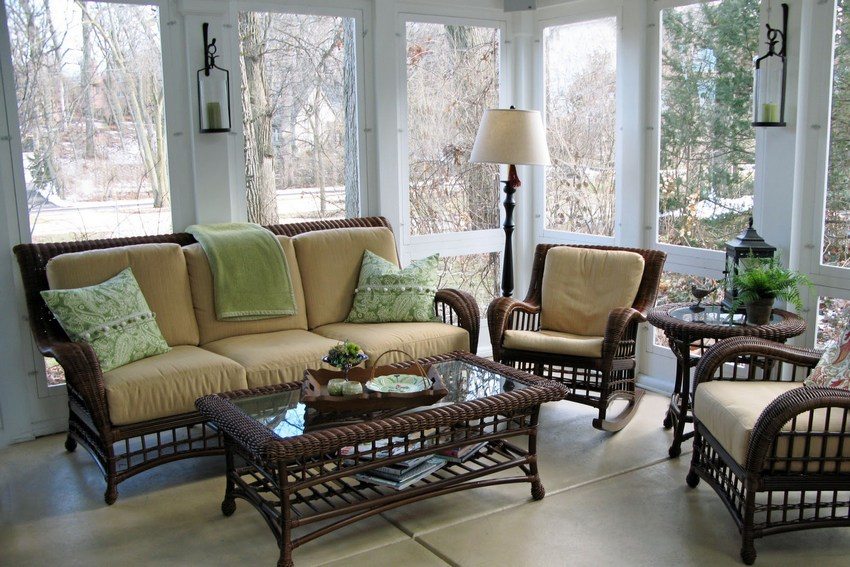
Closed and open verandas will decorate rattan furniture or vines
To give a polycarbonate veranda a cozy appearance, it is often equipped with a porch. It can be made of stone, wood or paving slabs. The main thing is that the porch material is non-slip and resistant to low temperatures.
The veranda is created spacious and light. The furniture placed in it should not interfere with the opening of windows. Light wicker rattan furniture will look appropriate.
In the summertime, the transparent walls can be covered with blinds or thick linen curtains. In the winter season, such a room can be heated with an electric heater. But, in whatever season the veranda is used, it should become a pleasant place for relaxation, work or sports activities.
Related article:
Terraces and verandas to the house, photo projects and design options. Built-in and attached verandas and terraces, differences from each other, design, materials for construction.
Open verandas attached to the house. Photos of unique solutions
The most common and feasible for DIY construction is the option of an open veranda with a canopy attached to the house. Such a veranda will allow you to be outdoors, despite the hot sun rays or cool summer rain. To give comfort and security, it can be framed with climbing bushes and flowers.
The main advantage of open attached verandas is the ability to be outdoors as much as possible, without giving up the usual comfort. On an open veranda, you can install furniture, equip an area for cooking and receiving guests. A functional extension can be used as a living room. And if you equip it with beach furniture (sun loungers, sun loungers), you get a great place for sunbathing. Numerous photos of the summer veranda attached to the house will help determine the style and performance of the future extension.
Available projects terraces to the house do it yourself (photos of many of them can be used as an example) suggest the device of an inclined floor surface - this is necessary for the outflow of rainwater. It must be made of a material with a rough surface. The floor is raised above ground level by 15-20 cm. The terrace fencing is about a meter high. Various materials are used for this: wood and brick, metal and glass, stretched decorative ropes and metal chains.
The shape of the open terrace can be any, depending on your preferences and imagination. The terrace looks original in the form of a polygon, framing the house along the entire perimeter. On such a terrace, you can find a shady corner at any time of the day, regardless of the position of the sun. In addition, if the relief of your site is uneven, the terrace may well serve as a leveling platform in front of the house.
Another important point is the connection of the outdoor terrace with the site itself. It is advisable to arrange the terrace in such a way that it offers a magnificent view of the garden, reservoir or alpine slide. Often, several steps are used to descend from the terrace, giving the overall structure a finished look.
If you wish, it is possible to attach a veranda to the house with your own hands. Studying projects, acquaintance with photos will help you get inspired to build the most beautiful veranda in the area.
